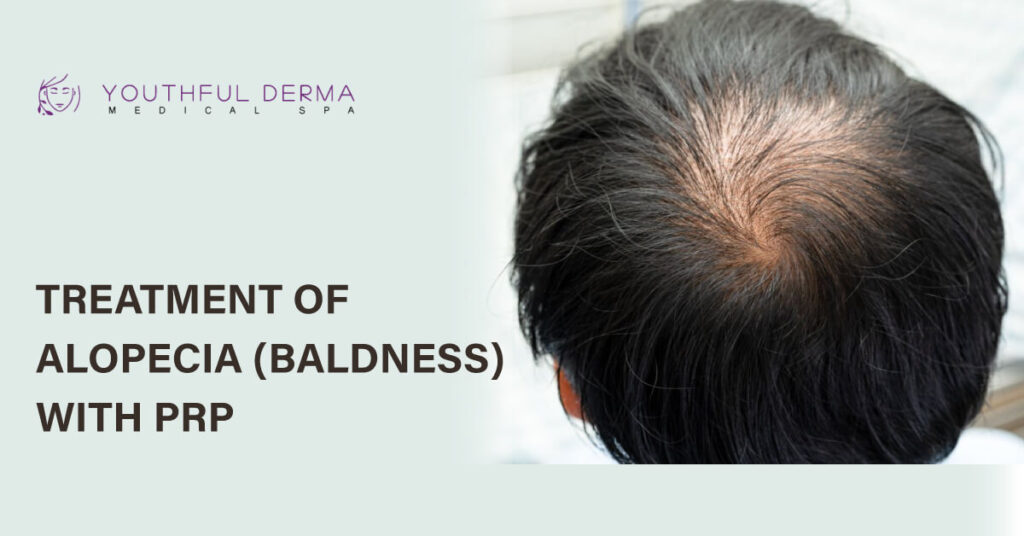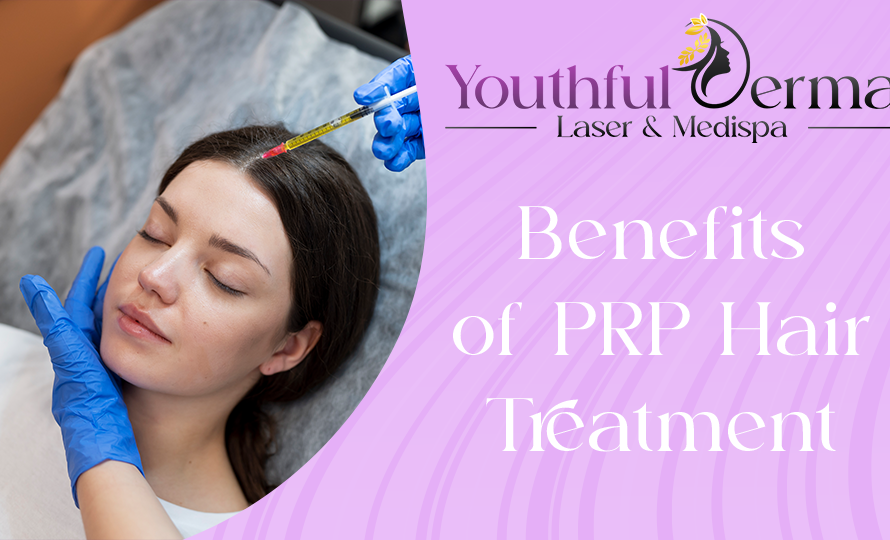Treatment of Alopecia (Baldness) with PRP
It was a misconception earlier that you encounter baldness on your way to aging only. With statistics and evidence, it is proven that young people also face this issue due to some eating disorders, medications, dyes, excessive use of styling products, and more. Thus, alopecia or baldness is a common issue that anyone can face from young to old.
Treatment options for alopecia range from medications to surgery, including invasive and noninvasive ways. Among various treatment options, PRP stands tall as the most prominent, popular, and effective hair regrowth method. This article emphasizes PRP hair treatment as an effective option for alopecia.

What is Alopecia and What Causes This Disorder?
Alopecia areata, or baldness, is a disease in which the immune system attacks the hair follicles (structure in the skin responsible for forming the hair), and then it causes hair loss. Although hair loss can be from any body part, alopecia usually affects the head. Here are the common reasons for alopecia:
- Genetics is one of the main causes of baldness. Inherited genes can affect these disorders.
- Hair loss may be influenced by hormonal changes brought on by aging, pregnancy, menopause, or other illnesses.
- Alopecia is a side effect of some medical therapies, including chemotherapy and radiation therapy.
- Another cause of hair loss is a diet lacking vital minerals like iron, zinc, biotin, or protein.
- Excessive hair stress from tight hairstyles like cornrows, braids, or tight ponytails, along with regular use of hair extensions, can harm hair follicles and cause traction alopecia.
- Hair loss could be an adverse effect of some drugs, including beta-blockers, anticoagulants, and some antidepressants.
- Aging causes naturally occurring changes in hair development, such as a reduction in hair density and diameter.
- Unhealthy eating habits, smoking, and excessive alcohol use can harm hair health and cause hair loss.
PRP As An Effective Treatment for Alopecia (Baldness)
Many types of alopecia, including androgenetic alopecia (male and female pattern baldness) and alopecia areata, are treatable with platelet-rich plasma (PRP) therapy.
More research is required to conclusively verify its long-term advantages as each person’s effectiveness may differ. Here’s an overview of PRP therapy for alopecia:
How PRP Therapy Works?
Compared to normal blood, platelets are typically five times more concentrated in PRP. Hence, this concentration is beneficial in many ways. Platelets generate growth factors that help in tissue regeneration and wound repair. During PRP hair treatment, platelets are injected deeply into the scalp to reach the base of the hair follicle. There they may stimulate a specific population of cells which are essential for hair development.
The doctor or dermatologist draws a small amount of the patient’s blood and processes it to concentrate the platelets as part of PRP therapy. Platelet growth factors activate hair follicles, encourage hair growth, and increase hair thickness. Then, they inject PRP solution into the scalp in the regions where the hair is thinning.
Positive Aspects of PRP for Alopecia
- PRP growth factors stimulate hair follicles, encourage hair growth, and enhance hair thickness and density.
- PRP therapy is safe because it uses the patient’s blood, which lowers the chance of infections or allergic responses. Side effects, such as swelling or pain at the injection site, are mostly minor and transient.
- PRP is less invasive than hair transplant surgery because it is non-surgical. Moreover, it doesn’t require any downtime or incisions.
- Additionally, doctors use PRP therapy with other hair loss therapies, such as oral or topical medicines, to improve outcomes.
- PRP treatments are relatively brief, frequently lasting about an hour, and patients can usually return to their regular routines immediately.
Final Thoughts
Visit Youthful Derma Medical spa Mississauga to receive professional advice specific to your needs PRP therapy is a promising solution for those with androgenetic alopecia or alopecia areata. While some studies point to its efficacy, more studies are required to prove its long-term advantages. Speaking with a licensed healthcare professional before deciding on PRP therapy for baldness is crucial so they can evaluate your unique situation and make individualized treatment recommendations. Visit Youthful Derma in Mississauga to receive professional advice specific to your needs.



